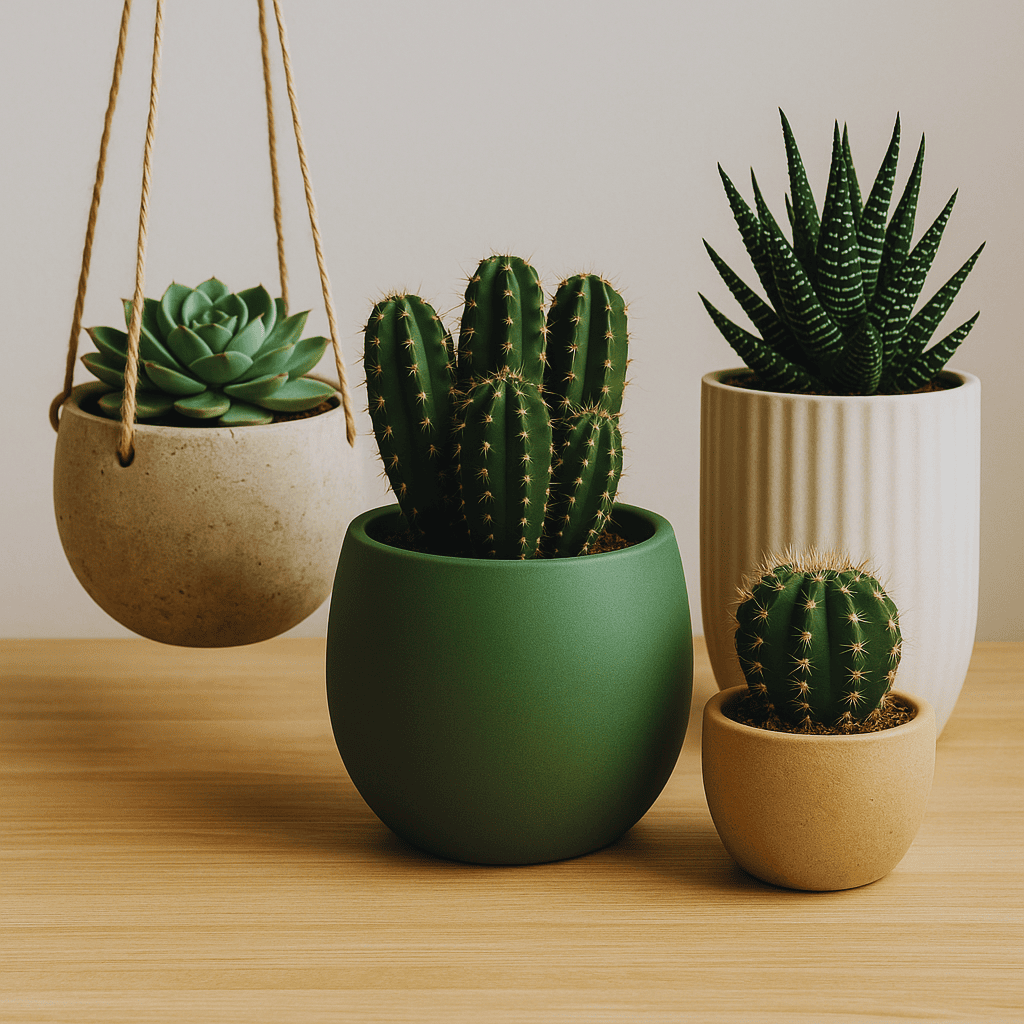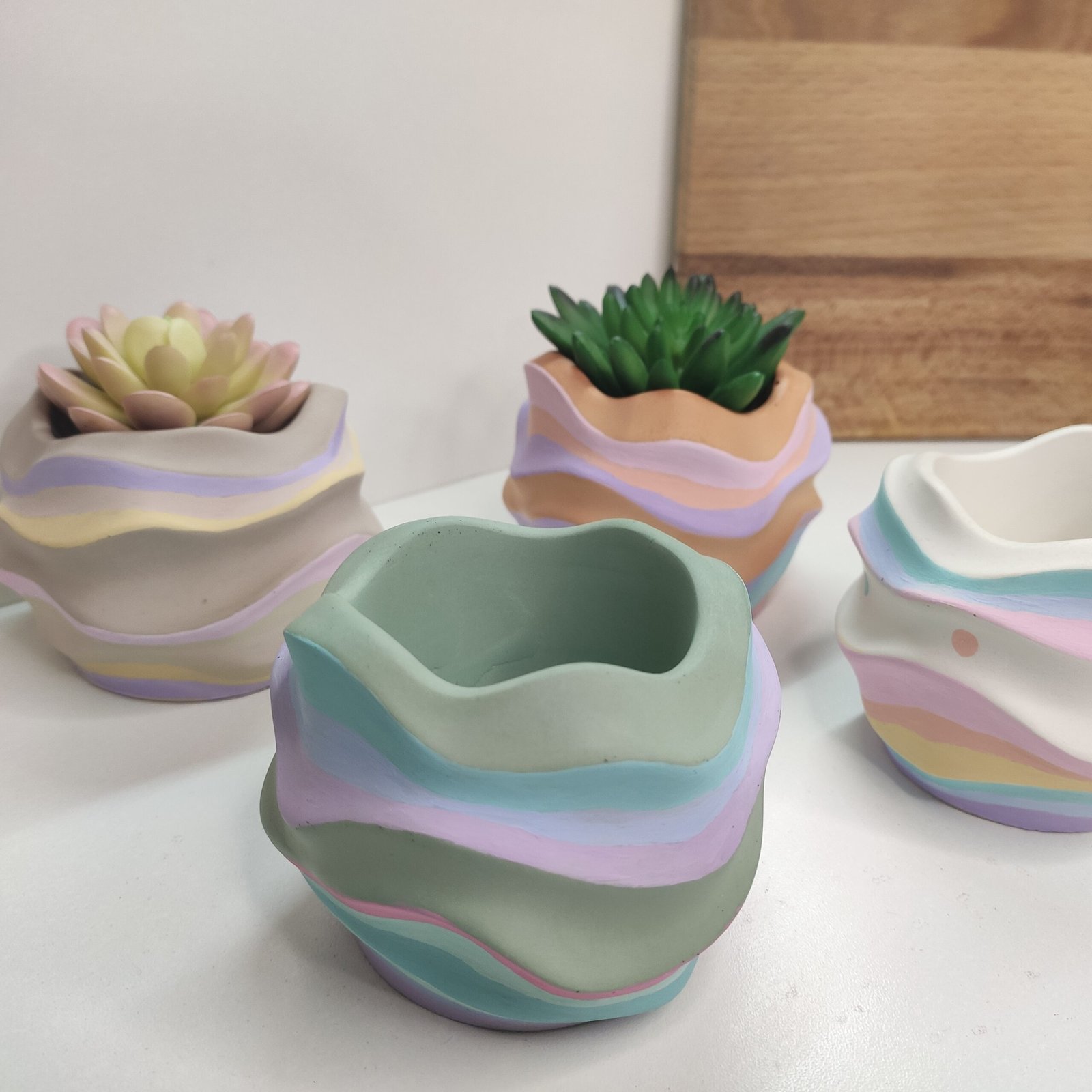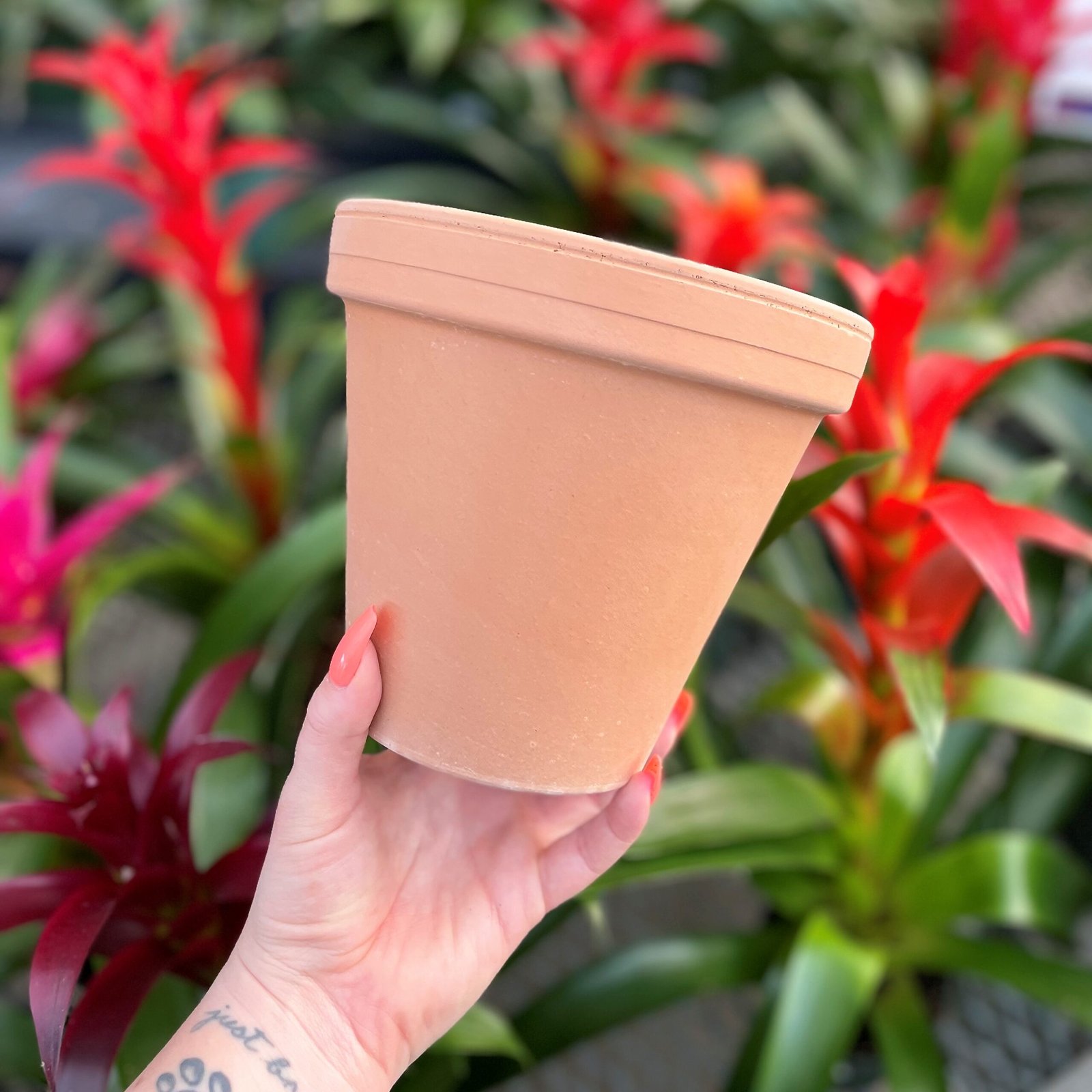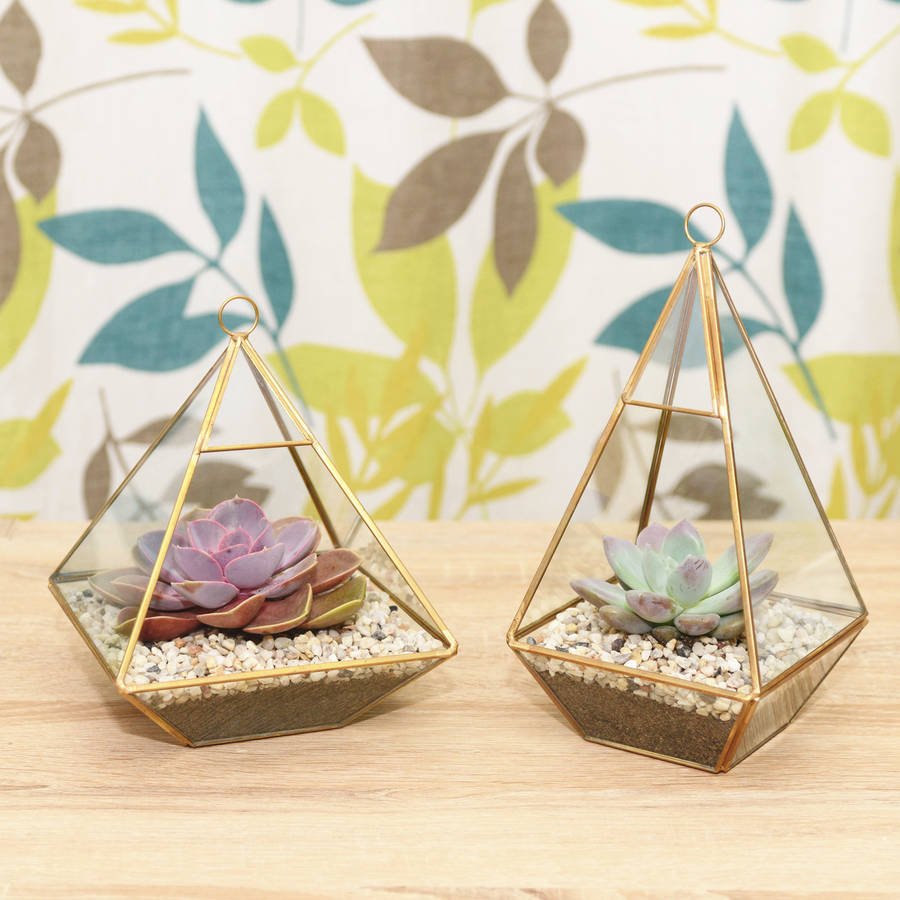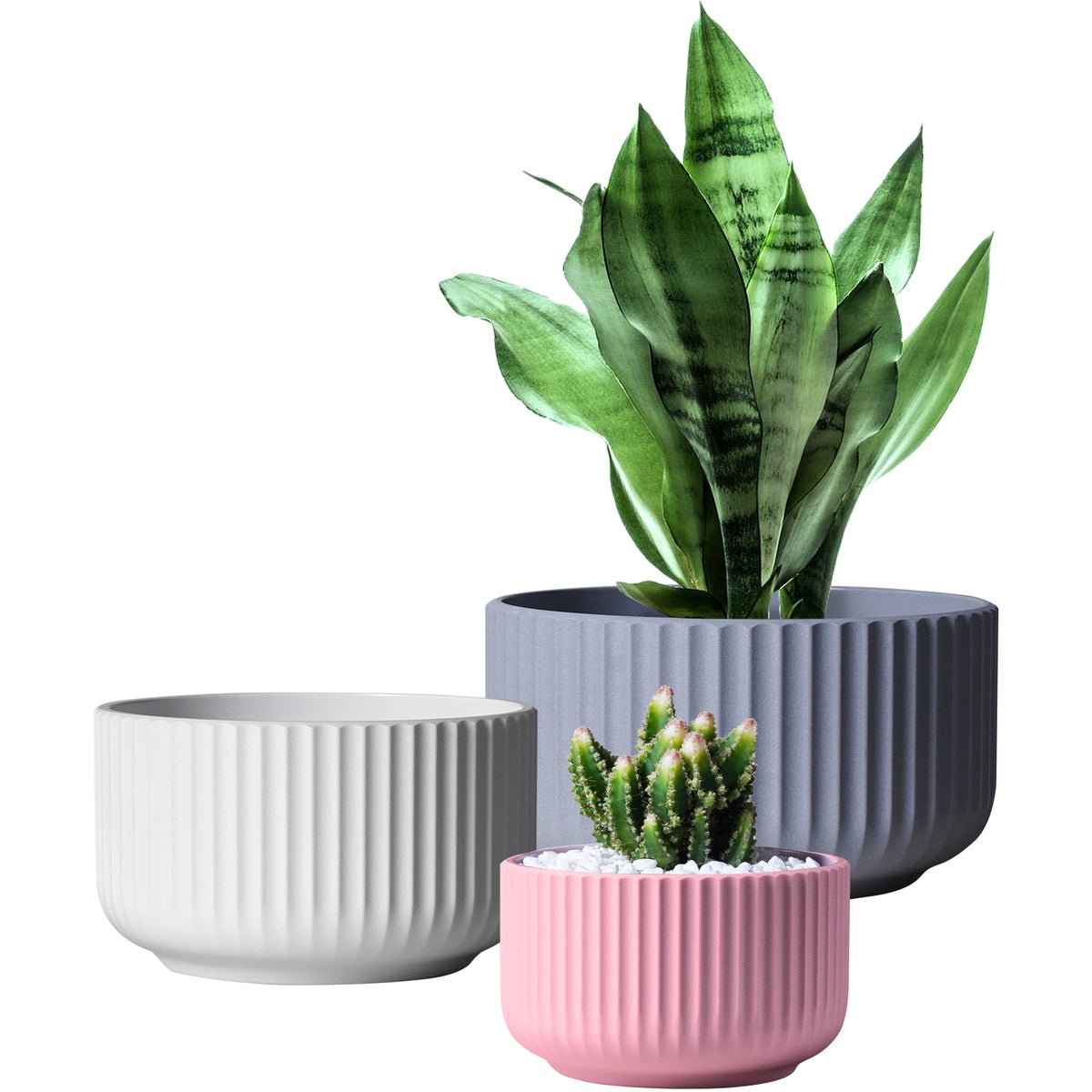Succulents are beloved for their low-maintenance charm, captivating forms, and resilience. But one golden rule is repeated across succulent care advice: “always use a pot with drainage” That might leave apartment dwellers, gift-givers, or style-focused plant lovers wondering — is it possible to grow succulents in pots without drainage holes?
The answer is yes — if done with care. In fact, many creative and beautiful succulent arrangements are done in containers like ceramic bowls, teacups, or glass terrariums — none of which have drainage.
The key lies in understanding how succulents grow and how to adapt your potting and watering habits.
In this guide, we’ll explore the best pots for succulents without drainage, what to look for when choosing one, and how to successfully style and maintain your plants in them.
Whether you’re a new plant parent or a succulent decor lover, this article will help you avoid the common pitfalls and enjoy thriving plants in stylish pots.
Understanding Succulents and Drainage Needs
Succulents have evolved in dry, arid regions where rain is infrequent but often intense. To survive these extremes, they developed fleshy leaves and stems that store water — making them naturally drought-tolerant. However, this also makes them prone to root rot if they sit in wet soil for too long.
Drainage holes in pots allow excess water to escape, preventing water from pooling at the roots. Without these holes, the water stays trapped in the soil, leading to oxygen deprivation and fungal issues.
But does that mean no-drainage pots are out of the question? Not at all. In fact, many indoor plant enthusiasts use them successfully by modifying a few care routines.
Here’s the key: you must control how much water goes in, because it won’t come out. With the right soil, pot style, and watering habits, succulents can live happily in no-drain containers — even flourish.
Why Use Pots Without Drainage?
You might be wondering: if drainage is so important, why even consider pots without it?
There are plenty of reasons:
- Design and Aesthetics: Decorative planters like teacups, ceramic bowls, and glass containers elevate your decor.
- Space-saving: Non-drainage pots tend to be compact and tidy — ideal for desks, shelves, and small apartments.
- Gift-giving: Succulents in stylish mugs or jars make thoughtful and trendy gifts.
- Creative Freedom: They allow you to create terrariums, dish gardens, or centerpieces that wouldn’t be possible with traditional planters.
As long as you adjust your care techniques, these pots can be both functional and fashionable.
When No-Drainage Pots Work Best
Not all environments or succulents are equally suited for no-drainage living. Here’s when using them works best:
- Indoor settings with climate control (less rainfall, no accidental overwatering from rain)
- Small succulents or cuttings that require less water
- Arrangements that use multiple plants — like a shallow dish garden
- Situations where watering can be strictly monitored — like on an office desk or entryway table
If you’re in a very humid area or tend to overwater, no-drainage pots may be trickier to manage, but they’re still doable with extra care.
What to Look for in Pots Without Drainage
Choosing the right pot for your succulents is essential—especially when there’s no drainage hole. While it may seem limiting at first, many stylish and functional options work beautifully with the right setup. Let’s break down what to consider when shopping for these containers.
Material: Ceramic, Terracotta, Glass, Plastic
The material of your pot affects not just aesthetics but also plant health.
- Ceramic pots are popular because they look elegant and come in endless colors and patterns. Unglazed ceramic allows for better airflow.
- Terracotta is breathable and great at wicking away moisture—ideal for avoiding overwatering issues. However, these pots are often heavy and can absorb water quickly.
- Glass containers, like terrariums, offer a modern, minimalist look. But they lack breathability, so they’re best used with careful layering and minimal watering.
- Plastic pots are lightweight and affordable. They don’t absorb water, which means moisture stays in the soil longer—great for forgetful waterers, but risky for overwatering.
Size and Depth Considerations
Succulents have shallow roots, so there’s no need to go deep with your pot. Choose a container that is just a bit wider than the plant’s base, with enough space to allow air circulation but not so much that water pools or stays stagnant.
Breathability and Airflow
Pots that breathe help prevent moisture buildup. That’s why porous materials like terracotta or unglazed ceramic are often recommended. If you’re using a less breathable container, like glass, you’ll need to be extra cautious with watering frequency and layering.
Inner Liners and Gravel Layers
Without a drainage hole, proper internal layering is non-negotiable. Always start with a layer of gravel or pebbles to collect excess moisture. Some people also use activated charcoal above the gravel to prevent bacterial growth and odor. A mesh or screen layer between the gravel and soil can help keep layers distinct.
Top 7 Best Pots for Succulents Without Drainage
Let’s explore the best types of non-draining containers you can use for style, practicality, and plant health.
1. Stylish Ceramic Bowls
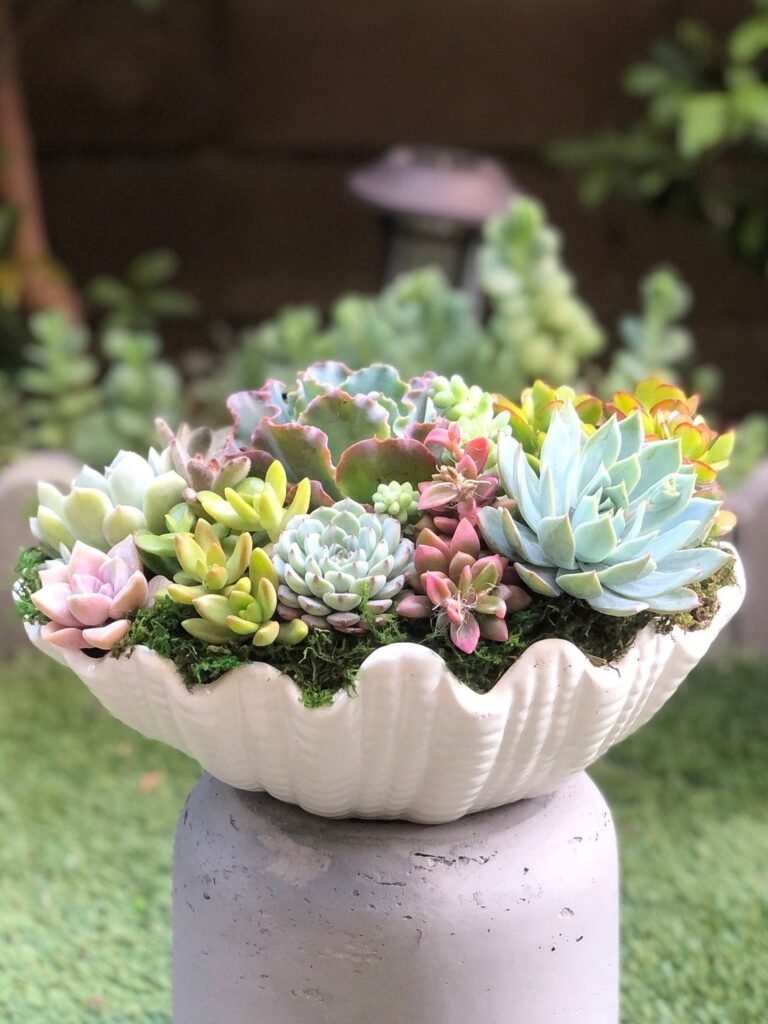
Low-profile ceramic bowls are ideal for tabletop succulent arrangements. Their wide opening provides excellent air circulation, and they can be paired with decorative stones on top for a clean, modern look.
2. Hanging Glass Terrariums
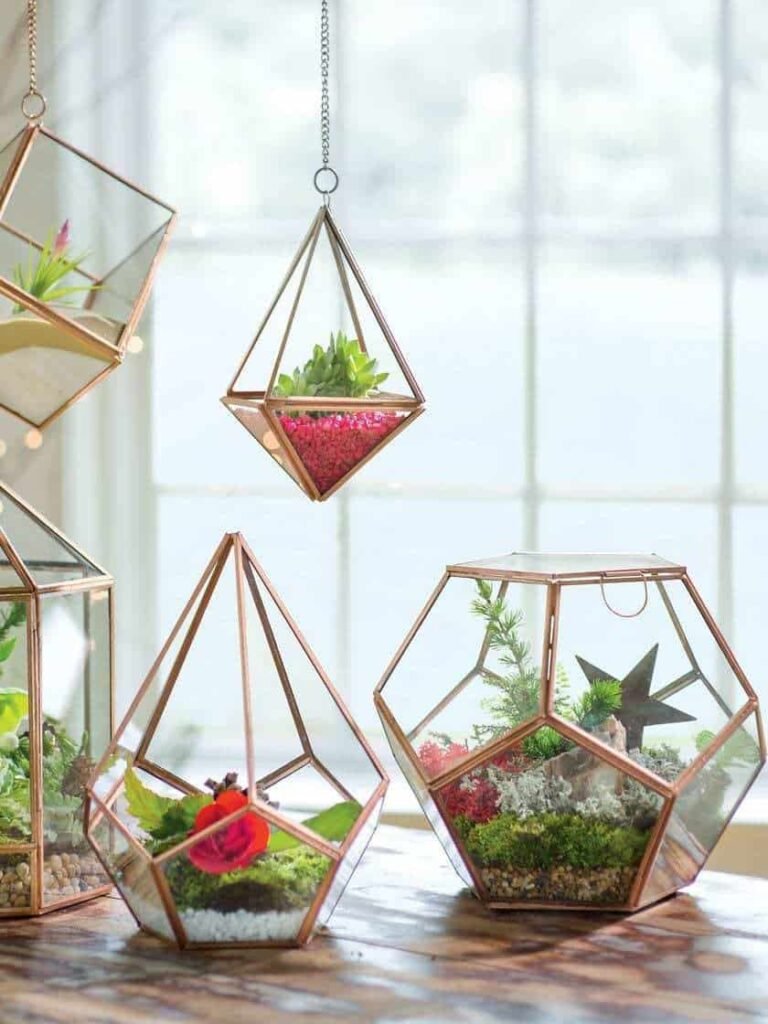
Sleek and minimalist, hanging glass terrariums are a beautiful way to display small succulents without drainage. Their airy design makes them perfect for bright corners, adding a modern, natural touch — all while offering a simple, low-effort way to bring greenery into your decor.
3. Vintage Teacups
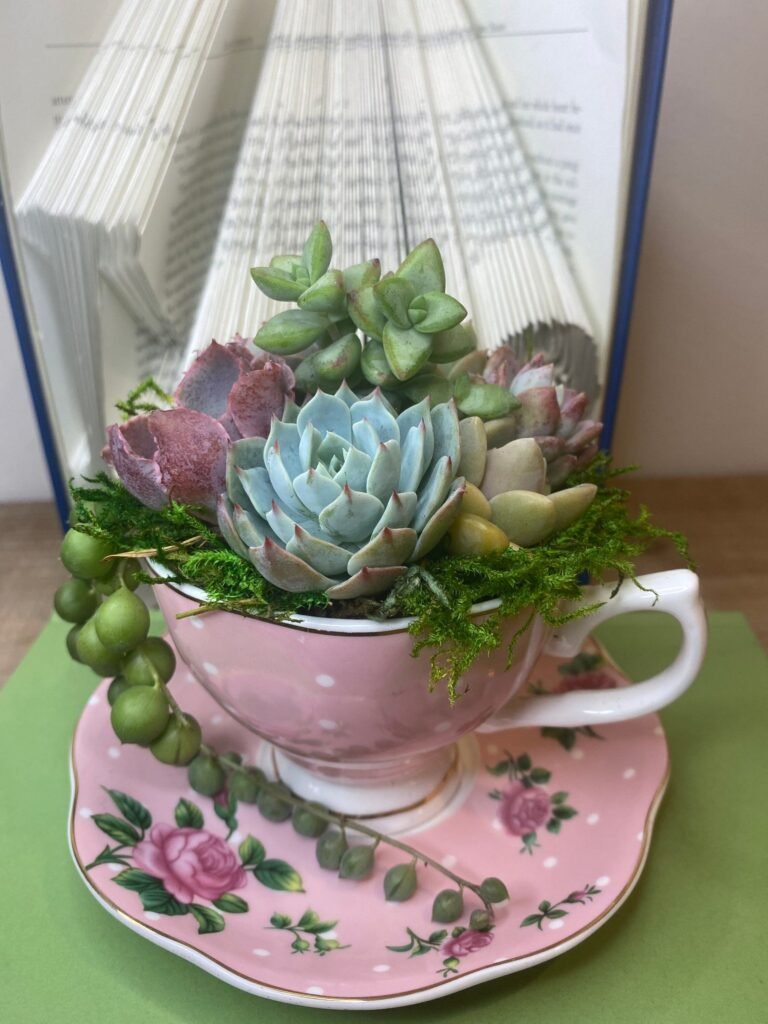
If you’re going for a romantic or shabby chic aesthetic, teacups are your best friend. Their size suits single mini succulents, and they look gorgeous on bookshelves, desks, or windowsills.
4. Wooden Planters
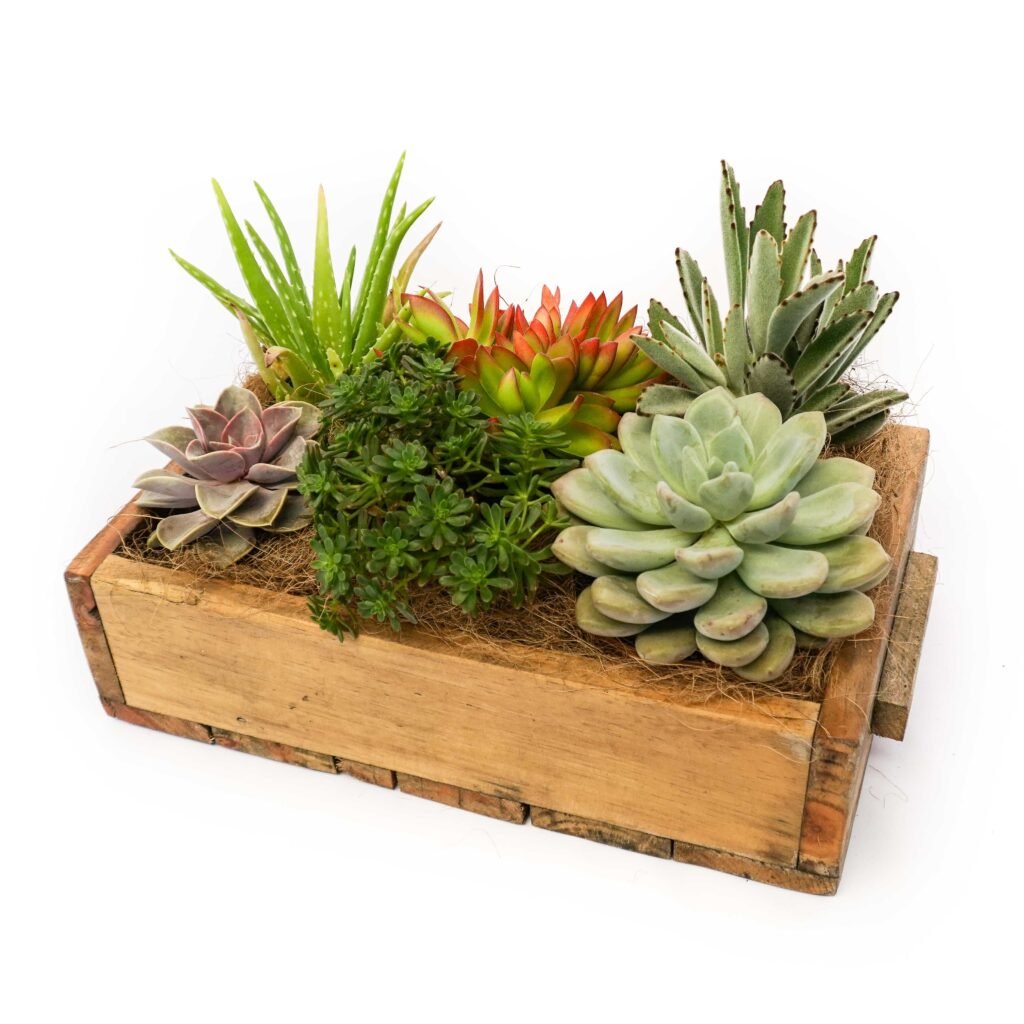
Rustic wooden boxes or troughs offer a natural look that pairs beautifully with succulent varieties like Echeveria or Sedum. Line the interior with plastic and create solid layering to prevent rot.
5. Concrete Pots

Minimalist and industrial-style homes pair well with concrete planters. These pots retain some breathability, especially if unsealed, and their solid weight makes them great for outdoor use.
6. Miniature Indoor Planters
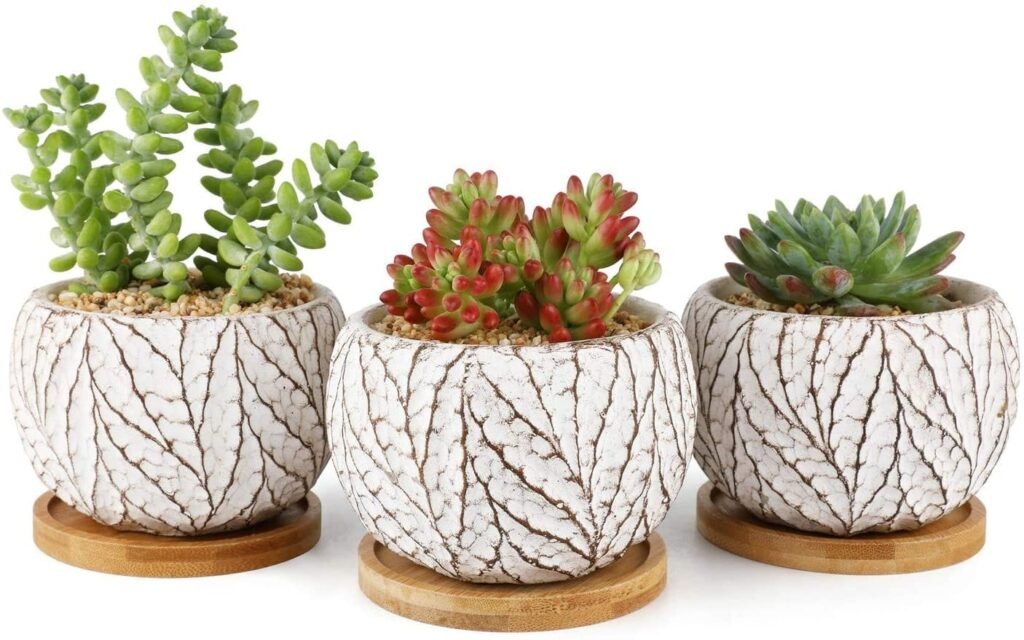
Small ceramic or stone planters are perfect for placing a few succulents in a kitchen window or bedside table. Look for shallow, wide containers that mimic natural rock crevices.
7. Wall-Mounted Planters
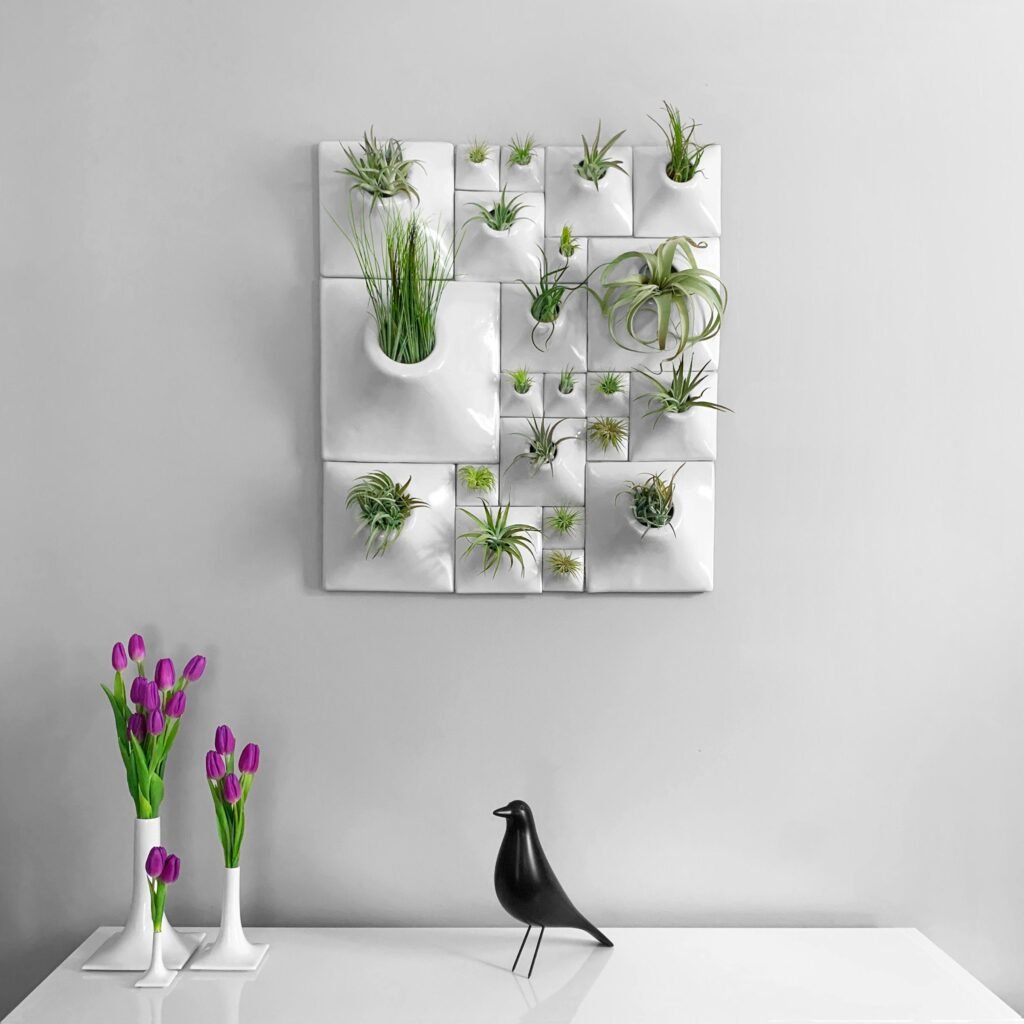
These bring vertical interest to your space. From wood-framed pockets to ceramic wall-hung designs, they let you showcase your collection without cluttering tabletops. Perfect for modern interiors or small apartments where space is a premium.
How to Plant Succulents in Pots Without Drainage
Planting succulents in pots without drainage isn’t just possible—it can be a fun and creative process. With a bit of strategy and the right setup, your plants will thrive beautifully, even in containers with no holes.
Soil Mix Tips (Fast-Draining Mixes)
The foundation of success lies in your soil mix. Succulents hate sitting in waterlogged soil, so using a well-draining mix is crucial. Look for cacti and succulents soil mix, or make your own blend using:
- 2 parts coarse sand or perlite
- 2 parts potting soil
- 1 part pumice or small gravel
This mix keeps moisture levels low and mimics the arid conditions succulents love.
Adding Layers (Gravel, Charcoal, Mesh)
Without drainage holes, layered planting becomes essential. Here’s how to build the perfect foundation:
- Bottom Layer – Gravel or Pebbles: Acts as a moisture sink to keep excess water away from roots.
- Activated Charcoal: Optional but recommended, especially in glass containers. Helps prevent odors and bacteria.
- Mesh or Coffee Filter: Placed above the charcoal or gravel to keep soil from sinking into the drainage layer.
- Top Layer – Soil Mix: As mentioned above, keep it light and gritty.
You can also finish with decorative rocks or sand on top to keep the soil from shifting and add a polished look.
Watering Techniques
Watering is the trickiest part of using pots without drainage. But once you learn the right rhythm, it becomes second nature. Follow these best practices:
- Use a squeeze bottle or narrow spout watering can to control water flow.
- Water sparingly and infrequently—only when the soil feels dry 1–2 inches below the surface.
- Tilt the pot slightly after watering to ensure excess moisture collects at one side, allowing roots to avoid soggy zones.
- Let the plant dry out fully before watering again. Less is more when it comes to succulent hydration.
Tips to Avoid Root Rot
Root rot is the most common issue with non-draining pots, but it’s easy to prevent with a few mindful practices:
- Always check moisture levels before watering.
- Don’t mist succulents—they don’t absorb water through their leaves like tropical plants do.
- Avoid placing your pots in low-light or humid corners.
- Remove any fallen leaves or plant debris to discourage mold.
Creative Styling Ideas
Succulents are as much about style as they are about greenery. Non-draining pots open the door to all kinds of fun, functional designs.
Succulent Centerpieces
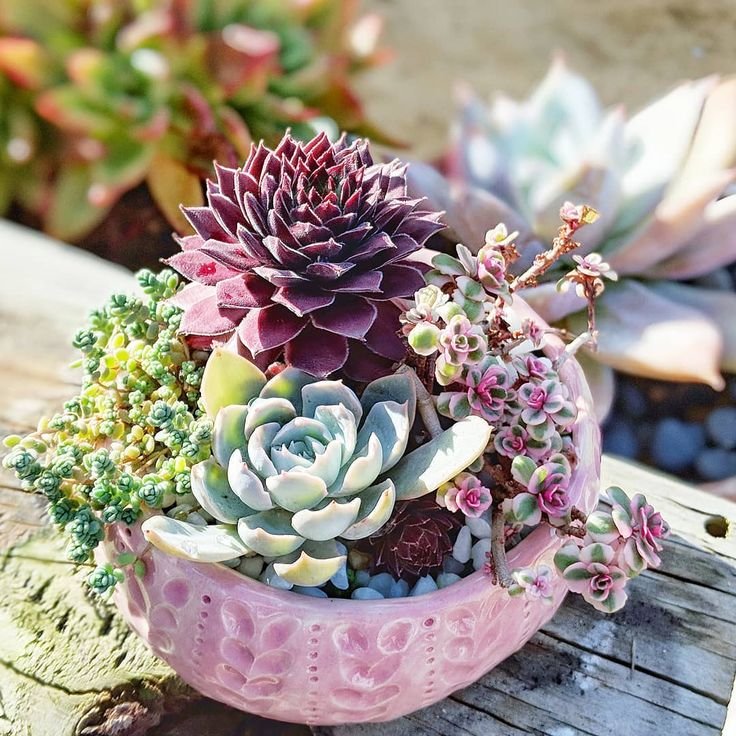
Make a statement with low ceramic bowls filled with rosettes like Echeveria, Graptopetalum, and Crassula. These can be the highlight of your dining table or coffee table.
Tabletop Dish Gardens
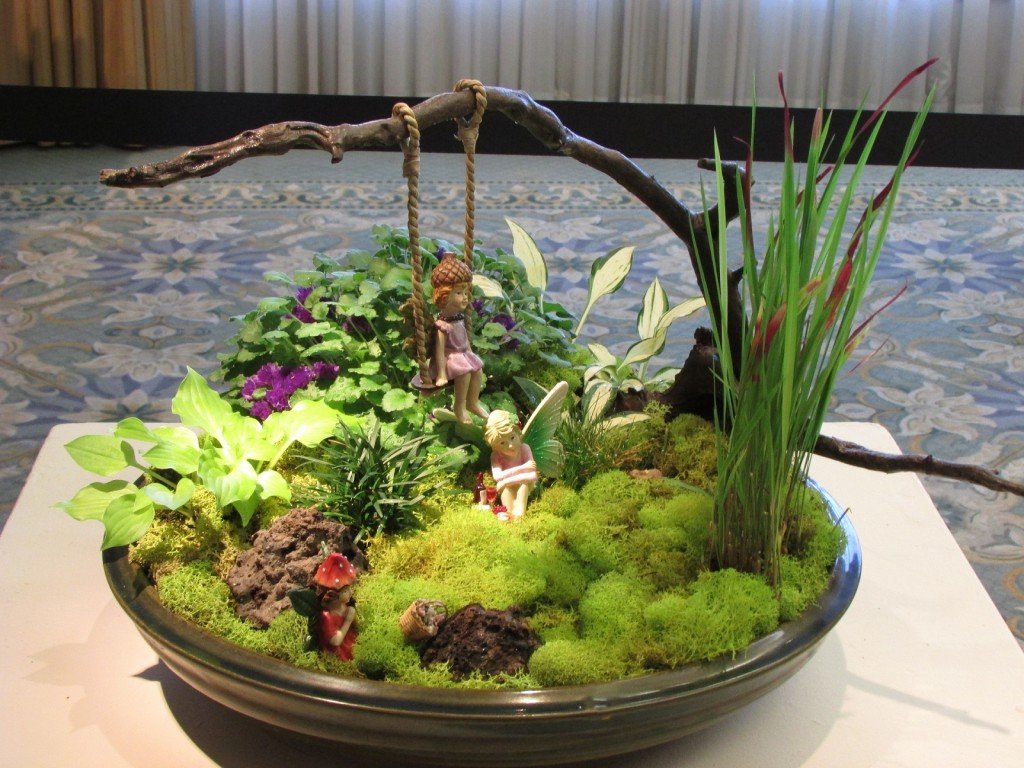
Miniature gardens with different textures, colors, and heights can live in a single wide container. Add fairy garden elements, stones, or driftwood for added charm.
Succulent Party Favors or Gifts
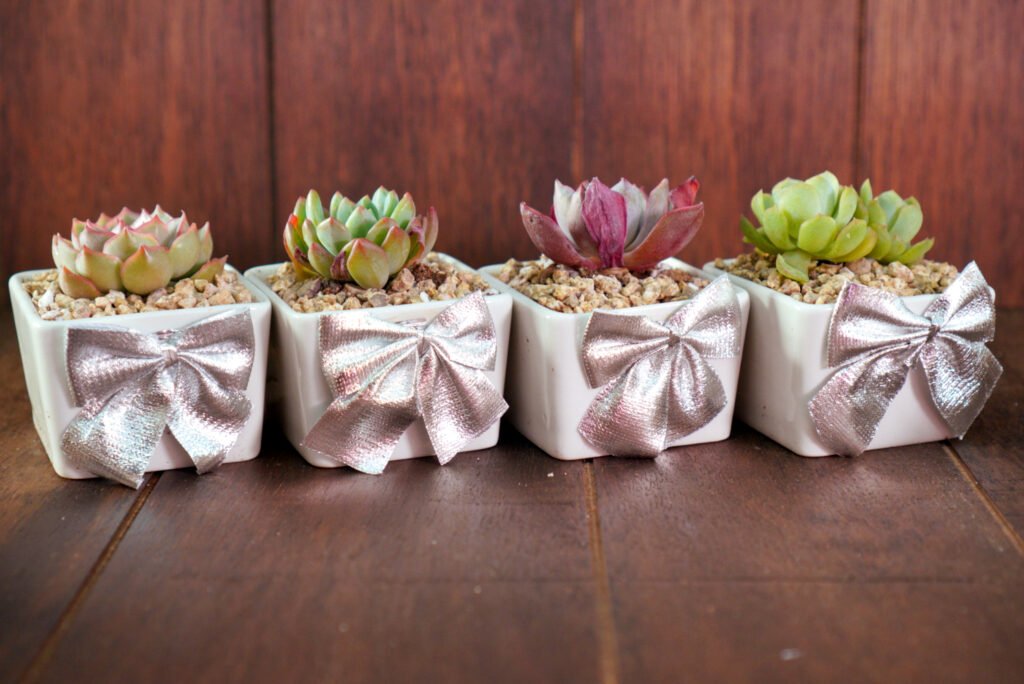
Tiny pots like teacups or mini cement planters make for charming and long-lasting favors at weddings, baby showers, or corporate events.
Zen-Style Arrangements
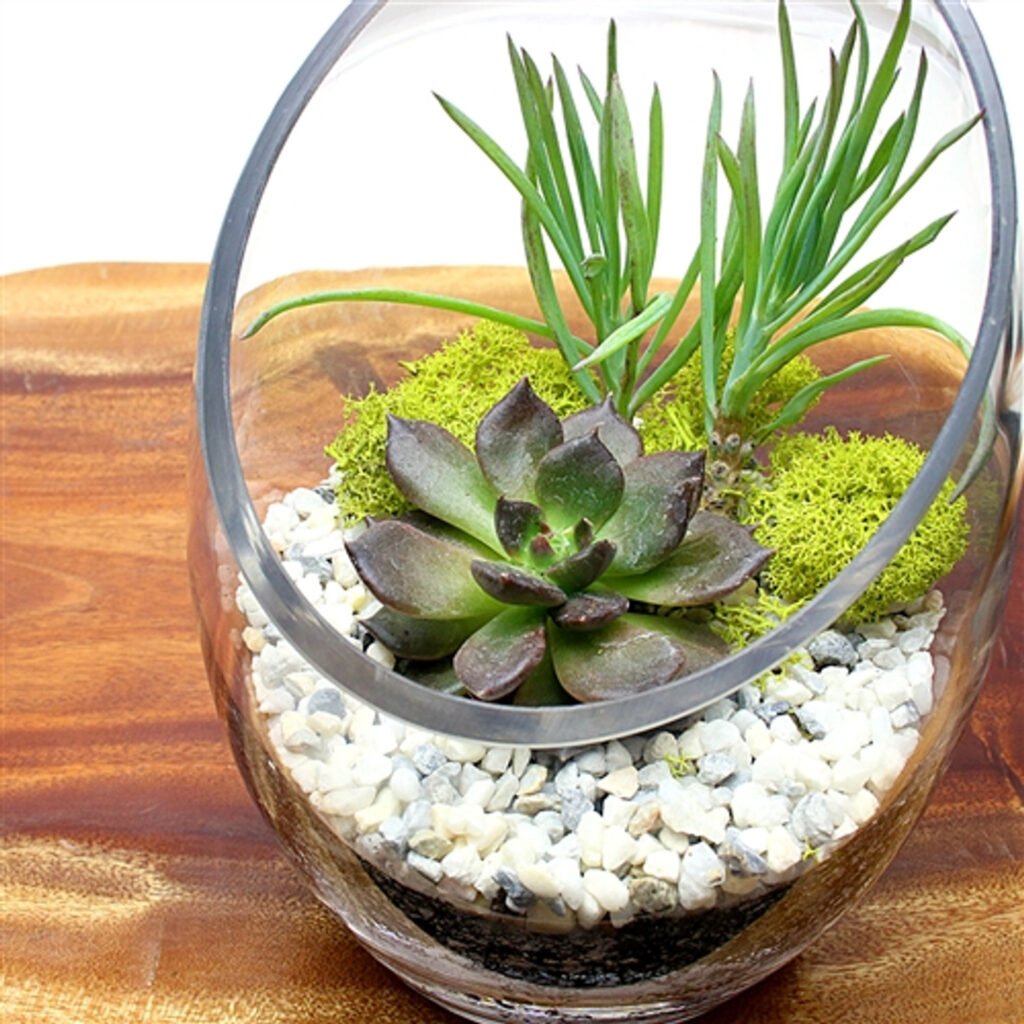
Combine succulents with sand, pebbles, and driftwood to create calming Zen-inspired decor. Use plants with subtle shades and elegant forms like Haworthia or Sedeveria.
Common Problems and Solutions
Even with all precautions, you may face a few challenges when growing succulents in pots without drainage. Let’s look at the most common issues and how to manage them effectively.
Overwatering
The biggest culprit in these pots is overwatering. Succulents can survive with very little water, so when in doubt, it’s better to underwater than overdo it. Signs of overwatering include:
- Mushy, translucent leaves
- Yellowing at the base
- Foul smell from the soil
Solution: Let the soil dry out completely before watering again. If damage is visible, remove affected leaves and repot into dry soil.
Poor Air Circulation
Non-porous pots or densely packed arrangements may limit airflow around your plants, which can trap moisture and create mold.
Solution: Space out plants where possible, avoid over-clustering, and place pots in breezy, open areas with plenty of indirect sunlight.
Mold and Mildew
Humidity and trapped moisture can lead to surface mold, especially in glass terrariums or sealed containers.
Solution: Scrape off surface mold and reduce watering frequency. You can also add a few grains of activated charcoal to help absorb moisture and odors.
Do’s and Don’ts for Pots Without Drainage
Do Use the Right Soil
Opt for gritty, fast-draining mixes that won’t compact over time. You can always blend your own using cactus soil, sand, and pumice.
Don’t Overwater
This can’t be stressed enough—succulents in no-drainage pots require minimal water, especially in cooler or more humid climates.
Do Monitor Humidity
If your room is particularly humid, you’ll need to water even less frequently. Watch for condensation on glass and adjust your care routine accordingly.
FAQs
Can succulents really live without drainage?
Yes, absolutely. While drainage holes are ideal, succulents can thrive in pots without them as long as you use the right soil, layering techniques, and are careful with watering.
How often should I water?
On average, every 2–3 weeks is enough, but always check soil dryness first. Temperature, humidity, and pot size will influence this.
Are glass pots okay?
Yes, but they require more attention to airflow and water levels. Make sure to add charcoal and avoid sealing the top completely.
What if I see mold?
Scrape it off gently, reduce watering, and increase airflow. If mold persists, consider repotting into fresh, dry soil.
Can I add a drainage hole later?
In many cases, yes—especially with ceramic or clay pots. Use a masonry bit to drill a small hole, but do so carefully to avoid cracking.
Final Thoughts
Succulents in pots without drainage offer the perfect blend of style and greenery, especially for indoor decorators or plant lovers in small spaces. While they do require a bit more attention, the flexibility in design makes it worth the effort.
It’s all about balancing aesthetics and plant health. Whether you’re arranging a modern table centerpiece, giving a thoughtful gift, or just adding charm to your desk, you now have the tools to do it right.
As your plants grow and thrive, you might eventually want to upgrade them to pots with drainage—or you may become so skilled that no-drainage setups remain your favorite style. Either way, these low-maintenance beauties can fit seamlessly into your life.
So go ahead—get creative, stay mindful, and enjoy your journey with succulents in beautiful, no-drainage containers!
